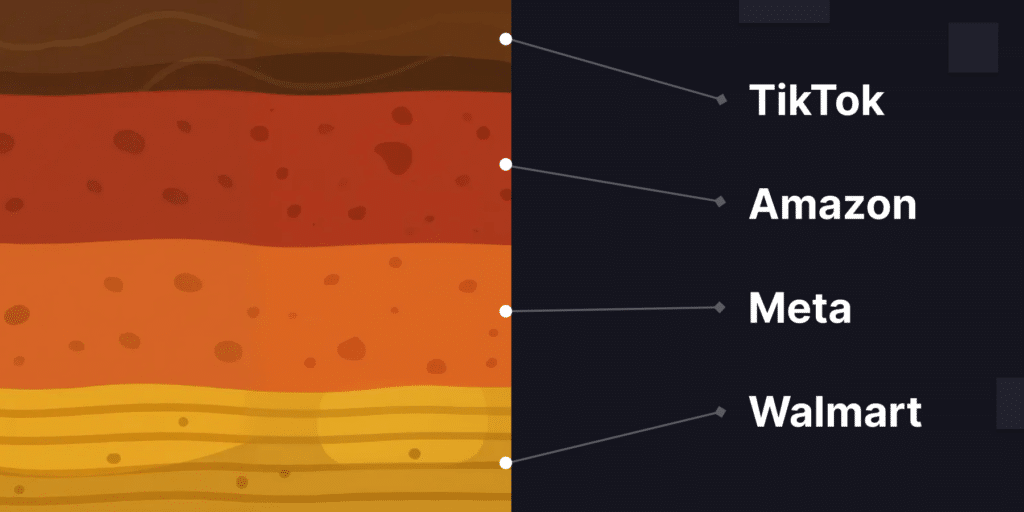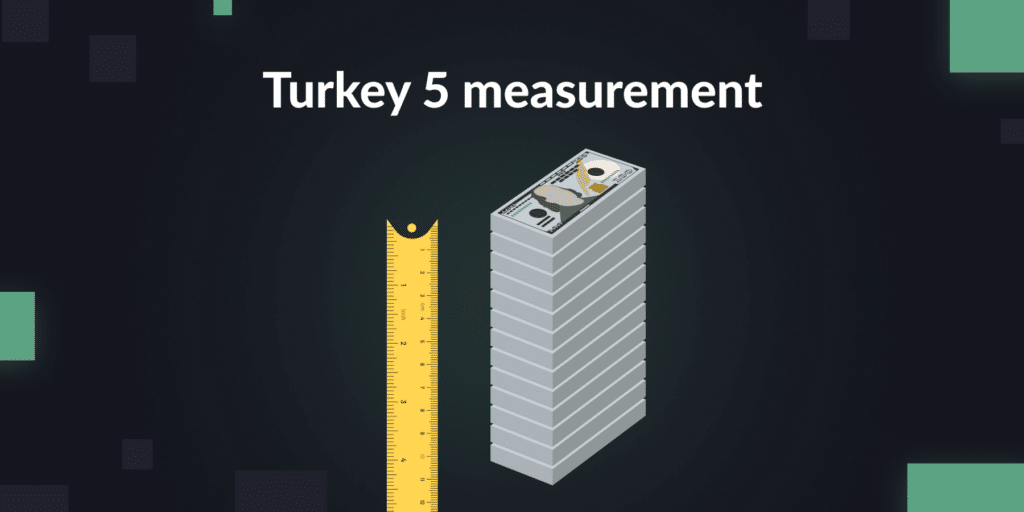What is Target Roundel? Last year, Digiday released a survey that contained a surprising data point. Of the CMOs it surveyed, the vast majority (76%) reported spending on Amazon ads. A smaller number (24%) were spending on Walmart Connect.
But in close third was Target Roundel, which 21% of CMOs surveyed reported they were using.
Target Roundel—the name of Target’s own retail media arm—has been quietly growing in the last few years. Target said that the overall ad business grew 20% last year.
Target Roundel especially is becoming more relevant as Target itself welcomes more brands into its online marketplace, Target Plus. More brands than ever are now selling products on Target.com.
As the universe of people selling on Target grows, so is the universe of brands that might advertise on the platform.
So let’s take a look at the state of Target as a marketplace and a retail media platform. What options are available now? And is it time to apply?
How many brands sell on Target?
The number of third-party sellers on Target is comparatively limited. While Walmart and Amazon have each opened their e-commerce sites to a wide range of sellers, Target is intentionally selective.
Right now, Target’s marketplace, Target Plus, only has 1,200 sellers on it—a tiny number compared to the hundreds of thousands or millions of sellers on Walmart and Amazon.
But that number is likely to increase in the coming years. In June, Target announced that it was growing its marketplace through a partnership with Shopify.
Of course, this doesn’t mean Target Plus is open to everyone. In its release, Target said that the marketplace was now open to “select” merchants, and the company noted elsewhere that “our team has incredibly high standards” when it comes to selecting brands to sell on the platform.
Any U.S. Shopify sellers can now apply to sell on Target through the Marketplace Connect app on Shopify. Admission is not guaranteed, but you can at least take a shot at making the Target website.
If you do make the cut for Target Plus, a lot of new opportunities open up. Selling on Target.com can sometimes be an audition for the real thing.
The retailer itself said that some of the products discovered through Shopify might eventually end up in physical stores, on the shelf.
How does advertising work on Target?
You can buy ads on Target’s website or its app, or use its shopper data to buy ads on social sites like Pinterest or on websites like PopSugar. Target has also worked with Roku and Fire TV to place streaming TV ads.
This works roughly like Amazon DSP: You use the retailer’s shopper data to reach people elsewhere.
Here are some of the most popular ad formats on Target Roundel:
- Product Ads, which appear in search results on the Target website or app.
- CTV Ads, which are high-quality video ads directing shoppers toward your Target store via Roku and FireTV platforms.
- Search Ads, which appear on third-party search engines like Google.
- Social Ads, which appear on Facebook, Pinterest, Instagram, and Snapchat.
- Display Ads, which appear on Target.com and on third-party sites like PopSugar, Conde Nast sites, and more.
- Influencer Ads. Tap into Target’s own influencer network and get organic placements for your brand on TikTok, Pinterest, or Instagram.
For the full guide of ad formats, see Target’s descriptions here.
One of the more interesting parts of Roundel is that you can use Target’s data to inform ad placements on third-party social sites or search engines.
The benefit of buying, say, a Facebook ad through Roundel is improved targeting and attribution.
Roundel can tell you with certainty that a Facebook user recently clicked your product page, for instance, and it can be sure that the person who clicked your ad made a purchase (or didn’t make a purchase) on its platform.
But there’s one important caveat: All of these formats—with the exception of the Product Ads that appear in search results—require managed service. That means you need to directly collaborate with Target’s internal teams to use them.
Product Ads are the only ad format that you can create self-serve directly in the Roundel platform.
What else is there to know about Target Roundel?
Many brands still create and place their ads through third-party retail marketplaces like Criteo. Intentwise is a Target partner through Criteo, and so we’ve been collecting data and analyzing these campaigns first-hand.
We’ve seen that, in Criteo, there is no concept of auto vs. manual campaigns in Criteo, and to segment the campaigns by brand vs. non-brand, you have to manually negate all of your branded terms, for instance.
Selling on Target Plus also dredges up some non-advertising concerns. For instance, as Chris Moe discussed in our recent podcast, Target has started matching the price of promotions on other sites.
So if you run a discount on Prime Day, Target might automatically match that promo price. It’s something to watch out for.
But we are excited about where Target’s marketplace and ad business is going. As Amazon ads become more and more expensive, brands should always be thinking about diversifying their assortment.
Target is one of the largest retailers in the U.S., and it is quietly becoming a major retail media player, too.

![[Screens] Blog Post [Screens] Blog Post](https://www.intentwise.com/blog/wp-content/uploads/elementor/thumbs/Screens-Blog-Post-qsi2gpp4v5pcpjfxzub7semni03z631liao50cg8xs.jpg)


